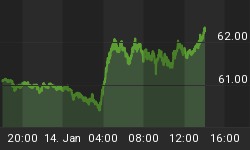Last week, in a rare bipartisan moment the Senate voted 82-14 confirming Robert Lighthizer as Trump’s U.S. Trade Representative.
Three Republicans, ten Democrats, and independent Bernie Sanders voted against confirmation.
Lighthizer is firmly against free trade as is Peter Navarro, Director of the White House National Trade Council.
While most of President Donald Trump’s nominees have cleared a divided Congress by narrow margins with mainly Republican support, Mr. Lighthizer on Thursday won significant backing from Democrats as well. That is a sign that, even as the opposition party battles the White House on much of its agenda, they are eager to work with Mr. Trump to beef up trade enforcement to curb imports and pry open foreign markets—and to craft policies aimed at curbing the U.S. trade deficit.
Utah Republican Orrin Hatch, the chairman of the Senate Finance Committee, also backed Mr. Lighthizer but openly voiced concerns about the changes the new administration may try to make to Nafta, which has wide support from the American business community and states near the Mexican border. “I told Mr. Lighthizer there are definitely opportunities to update and improve Nafta, but it is important that the administration follow the spirit of the Hippocratic oath: First do no harm,” Mr. Hatch said on the Senate floor.
In contrast with many other Trump appointees who have had little prior experience in government, Mr. Lighthizer, 69 years old, is a Washington trade-policy veteran, having worked as a staffer for the Senate trade committee and as a deputy United States Trade Representative under President Ronald Reagan in the 1980s. In those roles he was a free-trade skeptic, and helped to negotiate trade agreements aimed at curbing Japanese imports.
“I would slash the ‘free’ out of free trade and say trade is an expedient,” he told The Wall Street Journal in a 1996 interview when he was serving as a campaign strategist for Republican presidential nominee Robert Dole.
Mr. Lighthizer was most recently a Washington partner at law firm Skadden, Arps, Slate, Meagher & Flom LLP, where he represented steelmakers and other manufacturers seeking government protection from cheaper imports.
Beyond Nafta, Mr. Lighthizer is expected to help Mr. Trump flesh out the “America First” trade policy that was a main plank of his nationalist presidential campaign.
So far, Mr. Trump has done little to carry out the pledge, other than to withdraw from the 12-nation Trans-Pacific Partnership negotiated by President Barack Obama. Commerce Secretary Wilbur Ross has so far taken the lead shaping trade policy in Mr. Lighthizer’s absence, and has launched a series of studies and investigations that could ultimately lead to a harder-edged trade policy, but it is still unclear where they will lead.
During his confirmation hearings in mid-March, Mr. Lighthizer said he would look for ways to take more aggressive action to confront China, and reiterated his longstanding skepticism about the ability of the World Trade Organization to handle Chinese trade practices in a manner he considers fair. Both Mr. Trump and Mr. Lighthizer have suggested rethinking American compliance with the WTO decisions, a threat that has unnerved many U.S. trading partners, as well as American free-trade advocates and multinationals.
Mr. Trump’s own administration has been torn by tensions between one-time business leaders, like former Goldman Sachs Group Inc. President Gary Cohn, who runs the White House National Economic Council, and trade hawks like economist Peter Navarro, who runs a newly created Office of Trade and Manufacturing Policy. Mr. Lighthizer is seen as helping tip the balance more toward the trade hard-liners like Mr. Navarro and Mr. Ross, though his longstanding expertise in trade policy is also expected to lead him to encourage taking a more aggressive stance in using existing rules, rather than blowing them up.
What’s Next?
The safest answer is “I don’t know” and that especially applies to Trump who has not yet managed to deliver any of his key campaign goals and promises.
Trump repeatedly promised to label China a currency manipulator, a threat he reversed course on quickly. At one point media presumed hard-liners like Navarro were slowly being relegated to the sidelines, but the appointment of Lighthizer effectively buries that notion.
So far, Trump has managed to avoid a global trade war, and that is a plus. However, Lighthizer ties to the steel industry are particularly troubling. Tariffs may protect a few steelworkers but it would be at the expense of the auto manufacturers and every other manufacturer (and ultimately consumer) who uses steel.
By Mike Shedlock for Safehaven.com
















